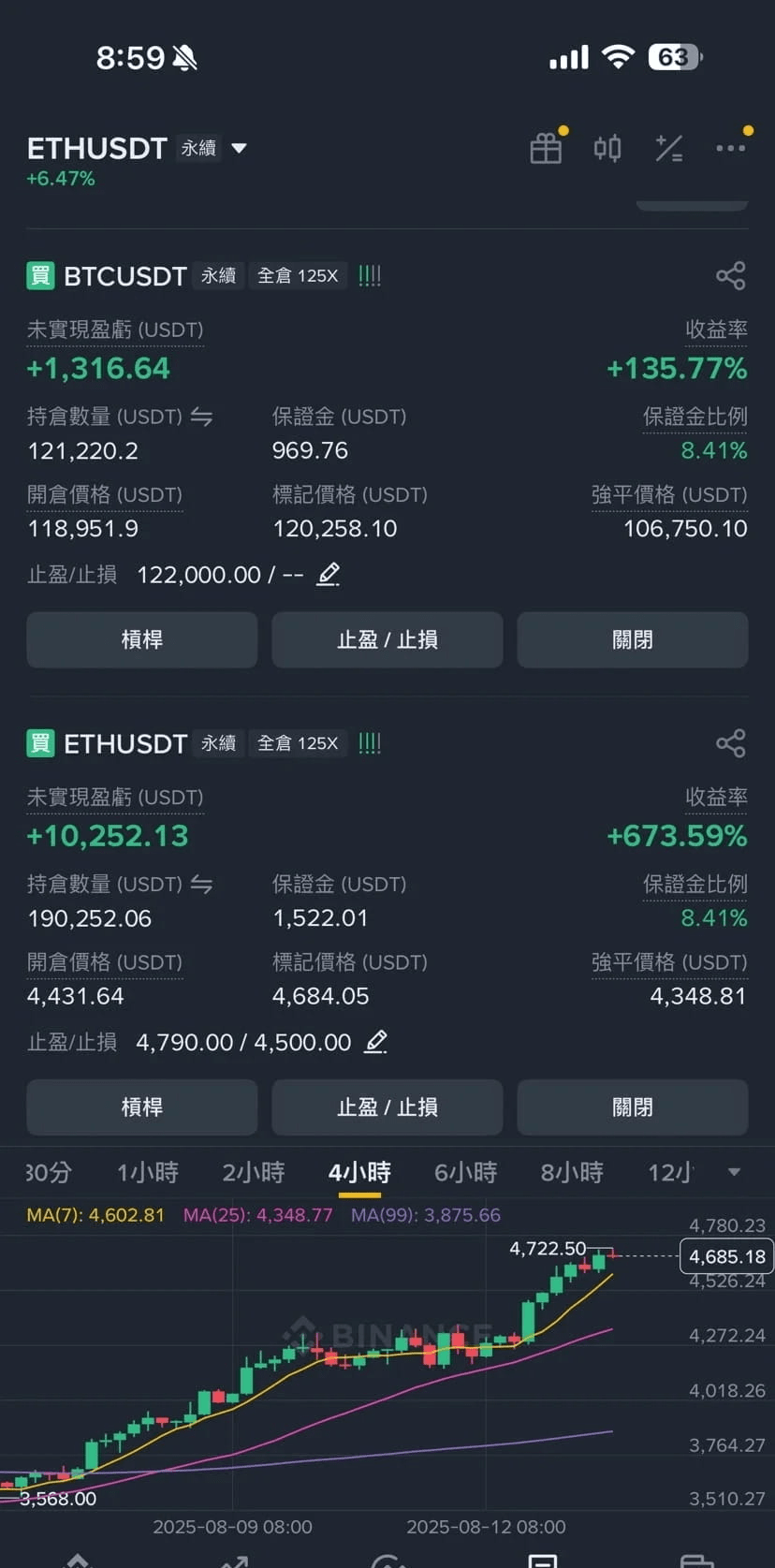When I first entered the cryptocurrency world, I also dreamed of 'going all in on altcoins and doubling my investment', but ended up losing all 80,000 in three months and almost deleted the software to quit. Later, I rose again relying on these four rules, and now I earn a stable profit of 15%+ every month. Today I’m sharing these valuable insights; those who understand have already started taking notes!
Rule One: Chasing after rising prices and selling in panic is a 'death trap' for beginners; learning to 'follow the trend' is the way to survive.
Don’t get distracted by the 5-minute candlestick chart and act randomly! I now only look for two signals:
When the daily chart shows 'two bullish candles sandwiching one bearish candle' and trading volume increases by over 30%, then consider going long;
Only when the weekly line breaks below the lower Bollinger Band and RSI is oversold (below 25) do I dare to buy with a light position.
Last month, BTC fell from 42,000 to 38,000, and while those around me were panicking and selling at a loss, I waited for the weekly oversold signal to enter the market, making 200 USDT in just 10 days. Remember:Trend is more important than price levels, and patience is more important than speed..
Rule Two: Position management is not about 'cutting ratios', but about 'leaving an escape route'.
In the past, I always thought about 'recouping my capital at once', betting all 100,000 on ETH contracts, and ended up getting liquidated due to a negative news event. Now I strictly adhere to two iron rules:
Spot position: no single coin exceeds 10% of total capital, for example, if you have 10,000 USDT, you should only invest a maximum of 1,000 USDT in BTC;
Contract position: under 5x leverage, margin should not exceed 5% of total capital, which means the actual leveraged funds are only 25%, so even if I make a mistake, it won't be devastating.
In the cryptocurrency world, it’s not about who makes money the fastest, but who survives the longest; keeping your capital gives you a chance to recover.
Rule Three: Stop-loss is not 'cutting losses', it is 'the last line of defense for preserving capital'.
I have seen too many people unwilling to cut losses after losing 10%, only to lose 50% in the end and leave angrily. Now I always set stop losses when making trades, divided into two situations:
Spot trading: sell decisively if it breaks below the recent support level by 3%, for example, if you bought a coin for 1,000 USDT, sell it directly if it drops to 970 USDT, at most losing 30 USDT;
Contracts: always set a hard stop-loss of 2% when entering a position, even if the market later rebounds, you won’t regret it—missing a market opportunity is fine, but getting liquidated leaves you with no chance at all.
Remember:The pain of a stop-loss is temporary, but the agony of liquidation lasts a lifetime..
Rule Four: Those who do not learn will eventually be eliminated from the cryptocurrency world.
Don’t believe the nonsense that says 'you can make money without learning'! I spend one hour every day doing two things:
Watch industry news from CoinDesk and ChainNews to avoid the pitfalls of 'regulatory negatives' and 'project scams';
Review the previous day's candlestick charts on TradingView, summarizing 'why I got it right this time' and 'how to improve next time'.
Last year, SOL dropped from 200 to 80, but because I saw the project’s staking unlock announcement in advance, I cleared my position early and didn't lose a penny.The money in the cryptocurrency world can only be earned within your understanding..
Let me be straightforward: the cryptocurrency world is not a casino; it is a battlefield for 'monetizing knowledge'. Whether you invest 100 USDT or 10,000 USDT, without methods and discipline, you will eventually be giving money to others.
Want to know how to judge trends and set more precise stop-losses? Comment 'I want to learn', and I’ll add you to my practical trading group where I share real-time market analysis and strategies daily. Following along is ten times better than fumbling around on your own!
#BNB创新高 #加密市场回调 #美国初请失业金人数




